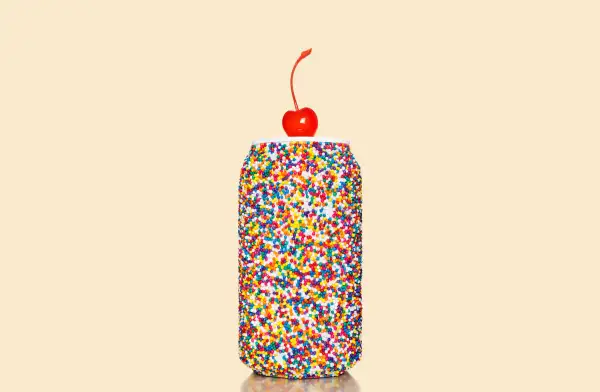10 Subliminal Retail Tricks You're Probably Falling For

Today's marketing strategies aren't dreamed up in smoky rooms full of Mad Men. The tools companies employ to get you to buy their stuff have grown ever more sophisticated, with marketers even using neural measurements to design product packaging and appeal to your deepest desires (to be covered in Cheetos dust, apparently).
Consumer experience these days is not simply designed; it's engineered. Research determines the ads you see, the scents and sounds you encounter in stores, even the way a salesperson might casually touch your arm. It's not all high-tech brain science, but here are some of the tricks companies use to entice you to spend more.
1. They make you nostalgic. Don Draper was on to something with his sentimental pitch for a Kodak campaign. But the abundance of families, puppies, and childhood ephemera in the ads you see every day is more than a simple ploy to tug on your heartstrings. Recent research shows nostalgia makes people value money less and feel willing to pay more for purchases.
2. They sic rude salespeople on you. At high-end stores like Gucci, customers are actually more inclined to buy expensive products after a salesperson has acted snottily to them, a new study found. This effect—which doesn't work with mass-market brands, only luxury—seems to have something to do with the desire to be part of an in crowd. To paraphrase Groucho Marx, you're more likely to want to belong to a club that doesn't want you as a member.
3. They use smaller packaging to get you to buy bigger. You'd think that it would be easier to buy and drink less soda and beer if you stick to the cute new mini-cans that seem to be all the rage these days. But research shows buying multi-packs of those small sizes can actually lead people to consume more overall.
4. They get you lost and confused. It's not an accident that grocery stores are often laid out unintuitively. Losing focus makes people spend more on impulse purchases, says expert Martin Lindstrom, who has conducted studies on marketing strategies. Getting interrupted during shopping also makes you less price-sensitive, according to research co-authored by marketing professor Wendy Liu at UC San Diego. That's because when you return to look at products after a distraction, you have a false sense of having already vetted them, she says.
5. They mimic your gestures—and get women to touch you. A woman’s touch—but not a man’s—makes people of either sex looser with their money, so when that saleswoman touches your shoulder, you may unwittingly end up spending more. Additionally, research shows that if a salesperson of either sex imitates your gesticulations, you are more likely to buy what he or she is selling.
6. They get you to handle the merchandise. Consumers are willing to pay at least 40% more for mugs and DVDs—and 60% more for snacks—that are physically present than for the same products displayed in photographs or described in text, according to a Caltech study. And other research shows your willingness to pay more increases as you spend more time looking at and holding objects.
7. They create the illusion of bulk bargains. Whether you're using a jumbo shopping cart or a small basket, you're going to be tempted to load it up, so it pays to make sure those "deals" are actually worthwhile. Researcher Lindstrom found that adding the sentence "maximum 8 cans per customer” to the price tag of soup cans caused sales to jump, even if no true discount was offered, because it gave the illusion of one. It's worth asking at checkout: Does that "10 for $10" actually just mean one for $1?
8. They give you free treats. Consuming even one free chocolate increased shoppers' desire for nonfood luxuries—including expensive watches, dressy designer shirts, and Mac laptops—right after eating it, according to a study published in the Journal of Consumer Research.
9. They drop the dollar sign. If you think the plain old "28" rather than "$28" on the menu of your favorite fancy restaurant is simply designed to look chic and minimalist, think again. A Cornell study found that a format that leaves off dollar signs and even the word dollar gets people to spend 8% more at restaurants.
10. They carefully engineer store ambiance. Ambient sounds and smells can make you less careful with your cash. In an appliance store, researcher Lindstrom pumped in the smell of an apple pie, and the sales of ovens and fridges went up 23%. He also found that alternating German and French music in a wine shop influenced which bottles customers purchased. Even nonmusic background sounds can make you overspend: A researcher found that the distraction of noise made people more likely to buy fancier sneakers.
